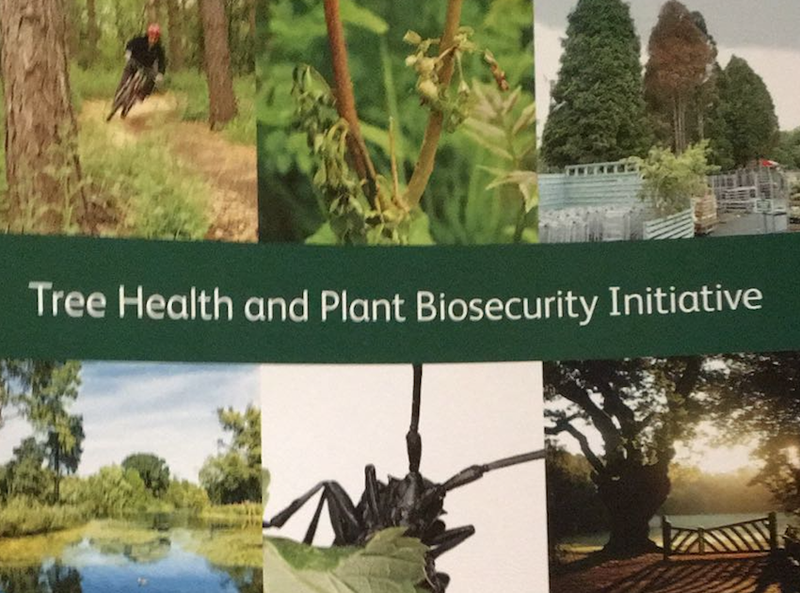
Owen Baker attends Tree Health and Plant Biosecurity Initiative
Earlier this week I attended the ‘Tree Health and Plant Biosecurity Initiative’ dissemination event, for a look into the future of a range of tree health and biosecurity management issues.
The initiative was a collaboration between a wide range of organisations, including BBSRC (Biotechnology and Biological Sciences Research Council), Defra, ESRC (Economic and Social Research Council), the Forestry Commission, NERC (Natural Environment Research Council) and the Scottish Government. The group was gathered to answer the urgent need for innovative, multidisciplinary research, to help ensure the future health and resilience of trees, woodlands and their associated ecosystems.
Boy, did they deliver. The most impressive aspect of the research was the range of expertise gathered, which provided solutions (albeit early prototypes) in pretty much every area the profession needs it.
Early detection of pests and pathogens was the first area to come under scrutiny. The current system relies on trained inspectors, who visit sites and perform visual inspections based on experience and expertise. This activity can be labour intensive, and reliant on trained operatives at every stage of the process. The solution? A fully automatic, self-contained machine, which can monitor a specific site, detect pathogens (the example shown at the event could detect Ash die-back spores) and feedback in real time. If a pathogen is detected, the machine can warn relevant parties via a built-in GSM transmitter. The system could also potentially be modified to monitor for insect-borne diseases, such as Xylella. The machine demonstrated at the show was roughly the same size as a desktop computer, but there is the potential for smaller, more mobile units.
Biological control was another area of research undertaken. As part of the initiative, researchers discovered a variety of environmentally friendly ‘biopesticides’ based on fungi and botanical semiochemicals, which are highly effective in the battle to control insect pests. Subjects included Pine Weevil, Asian Longhorn Beetle, Pine Processionary Moth and Black Vine Weevil, and the results were encouraging – a significant number of the pests were vulnerable to sustainable alternatives to chemical pesticides. In particular, ginger oil was found to be highly effective in killing pine processionary moth larvae. Initial research suggests oak processionary moth larvae are similarly vulnerable to ginger oil.
Research conducted in the field of social science revealed some particularly interesting trends in public perceptions of tree health. The aim of this research was to consider how experts should relay information regarding the threat of pests and diseases to the public. Lessons learned could be used to teach policy makers how best to communicate with a range of stakeholders. Social media use was also investigated. This research is hugely important, as the understanding of different publics behaviour can be used to promote positive, specific behaviour, which will improve plant biosecurity.
I will discuss many areas of this research in greater detail over the next few months. However, if you are interested in any particular area, some of the research is free to download from the internet, so please contact me on owen.baker@bali.org.uk
